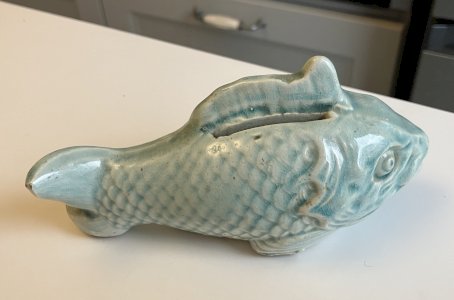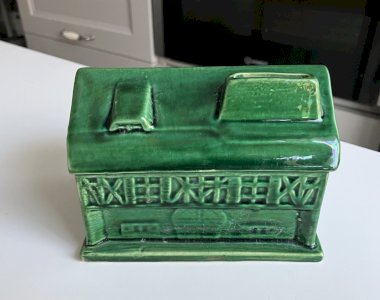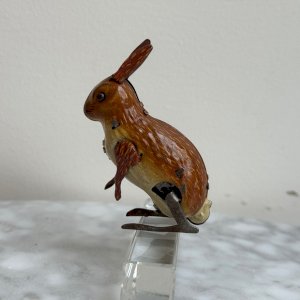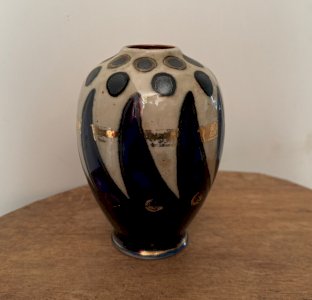- Sell Now
- Home
-
FURNISH
All STORAGE FURNITURE • Wardrobe • Chests of drawers, Chiffonnier • Sideboard • Shelves, Bookshelves • File cabinet • Sewing Furniture • Bar cabinet • TV Stand • Trunk, Chest TABLE & BEDSIDE TABLE • Dinner Table • Coffee table, side table, end table & Bedside • Console, Pedestal table & Selette • Serving Table, Trolley • Card Table • Draper's counter & table SEAT • Sofa • Armchair • Chair • Stool • Bench • Daybed • Beanbag & Footrest • Deckchair & Outdoor DESK, SECRETARY, DRESSING TABLE GARDEN LOUNGE BEDDING • Bed • Bedhead • Cradle, Moses basket CRAFT FURNITURE, WORKSHOP • Workbench • Stool, Ladder, Step • Easel & Trestle SCREEN PIANO
-
DECORATE
All TO PUT • Sculpture, Statuette • Vase & Planter • Dame Jeanne, Bonbonne & Flacon • Bridal globe, Dome • Pin tray, Ashtray • Candlestick & Candle • Photo frame • Stone, Fossil, Mineral • Earth Globe MIRROR WALL DECORATION • Painting • Engraving & Illustration • Poster • Tapestry • Wall Frame • Plate & Sign • Juju Hat & Wall Paniel • Mask • Hunting Trophy • Other object to hang CLOCK, PENDULUM & ALARM CLOCK ARRANGEMENT • Jar, Box & Case • Basket, Wastebasket & Crates • Magazine Rack & Vinyl Holder • Display & Spinner • Coat hook & Coat rack • Furniture Valet & Mannequin • Towel Holder • Suitcase & Travel Bag • Bottle Rack • Umbrella holder BATHROOM OFFICE • Mail holder • Bookends • Sulphide & Paperweight • Stationery FIREPLACE ACCESSORIES HOBBIES • Vintage Sport • Music • Vintage device • Smoking Item • Militaria, Ancient weapon • Miniature Vehicle • Game, Playing Cards • Collection object & Curiosity BIRD CAGE RELIGION, SPIRITUALITY
- TEXTURE
- ILLUMINATE
-
ACCOMODATE
All TABLE & SERVING • Plate • Silverware • Knife Holder • Glass • Bowl, Mug, Cup • Bowl, Ramekin & Cup • Dish, Cup & Salad Bowl • Tray, Basket & Server • Table Mat • Pitcher, Carafe, Bottle, Tea & Coffee Jug • Ice Bucket • Salt & Pepper shakers, Oil & Vinegar shakers • Sugar and jam maker • Gravy boat • Butter dish • Egg cup • Terrine OLD BALANCE CUTTING BOARD GRINDER CASSEROLE, SAUCEPAN & PAN KITCHEN UTENSIL & ACCESSORY
- TINKER
- KIDS
- Jewelry & Accessories
Login
Related Products
Description
HB QUIMPER QUILLIVIC 1879 1969 279 PP LARGE EARTHENWARE PLATE WITH ARABESQUE DECORATION C1631Oval dish in polychrome enamelled earthenware with stylized decoration of volutes and waves. It is signed and numbered on the bottom: HB Quimper Quillivic 279 PP (René QUILLIVIC (1879-1969) Note two small chips on the edge as well as on the edge of the base. Some minor cooking defects on the underside of the dish. All imperfections have been photographed.Sold as presented in the photos.For the state, please detail the photos.René Quillivic was born in Plouhinec in 1879, near Audierne bay, into a fishing family. brother at sea, he gave up fishing and became a marine carpenter which allowed him to learn carpentry and woodcarving. The "tour de France" he undertook made him go through the shipyard. 1900 Universal Exhibition in Paris, where he enrolled in the evening course at the School of Decorative Arts, then in 1903 entered the studio of the sculptor Antonin Mercié (1845–1916) at the School of Fine Arts. His first works exhibited at the Salon des Artistes Français in 1905 then at the Salon des Indépen dants in 1907 testify to his attachment to Brittany and his willingness to deal with subjects inspired by everyday life. After the war he sculpts many monuments to the dead, assigning them a completely separate place in the history of art, focusing less on showing the sacrifice of the dying or dead hairy than the evocation of the sacrifice such as it is reflected in the eyes and in the attitude of all those who suffer from no longer having the disappeared by their side, representing for example a father in Plozévet, a mother in Carhaix, a sister in Bannalec, an orphan in Coray, the hairy disappeared sometimes appearing, but as an addition. From 1919, he was entrusted with the realization of monuments to the dead (he will realize sixteen for the only department of Finistère). In 1920, he becomes artistic director at the HB earthenware factory in Quimper, where he seeks to renew the decorations by drawing on the embroidery vocabulary. He is also developing the marketing of sculpture reductions. His style is marked by the desire to give a modern image of Brittany. He died in Paris in 1969.The photos are an integral part of the description.Dimensions: Height: 4.5 cmWidth: 31 cmLength: 44.3 cmS: Ref: 4QYQU51C I remain at your disposal for any questions. images, then 1 second time to zoom Image host - www.photos-encheres.com
Réf :
#17134
Color(s) : Multicolored
Comments
Related Products
Description
HB QUIMPER QUILLIVIC 1879 1969 279 PP LARGE EARTHENWARE PLATE WITH ARABESQUE DECORATION C1631Oval dish in polychrome enamelled earthenware with stylized decoration of volutes and waves. It is signed and numbered on the bottom: HB Quimper Quillivic 279 PP (René QUILLIVIC (1879-1969) Note two small chips on the edge as well as on the edge of the base. Some minor cooking defects on the underside of the dish. All imperfections have been photographed.Sold as presented in the photos.For the state, please detail the photos.René Quillivic was born in Plouhinec in 1879, near Audierne bay, into a fishing family. brother at sea, he gave up fishing and became a marine carpenter which allowed him to learn carpentry and woodcarving. The "tour de France" he undertook made him go through the shipyard. 1900 Universal Exhibition in Paris, where he enrolled in the evening course at the School of Decorative Arts, then in 1903 entered the studio of the sculptor Antonin Mercié (1845–1916) at the School of Fine Arts. His first works exhibited at the Salon des Artistes Français in 1905 then at the Salon des Indépen dants in 1907 testify to his attachment to Brittany and his willingness to deal with subjects inspired by everyday life. After the war he sculpts many monuments to the dead, assigning them a completely separate place in the history of art, focusing less on showing the sacrifice of the dying or dead hairy than the evocation of the sacrifice such as it is reflected in the eyes and in the attitude of all those who suffer from no longer having the disappeared by their side, representing for example a father in Plozévet, a mother in Carhaix, a sister in Bannalec, an orphan in Coray, the hairy disappeared sometimes appearing, but as an addition. From 1919, he was entrusted with the realization of monuments to the dead (he will realize sixteen for the only department of Finistère). In 1920, he becomes artistic director at the HB earthenware factory in Quimper, where he seeks to renew the decorations by drawing on the embroidery vocabulary. He is also developing the marketing of sculpture reductions. His style is marked by the desire to give a modern image of Brittany. He died in Paris in 1969.The photos are an integral part of the description.Dimensions: Height: 4.5 cmWidth: 31 cmLength: 44.3 cmS: Ref: 4QYQU51C I remain at your disposal for any questions. images, then 1 second time to zoom Image host - www.photos-encheres.com
Réf :
#17134
Color(s) : Multicolored
 English
English  Français
Français 




























